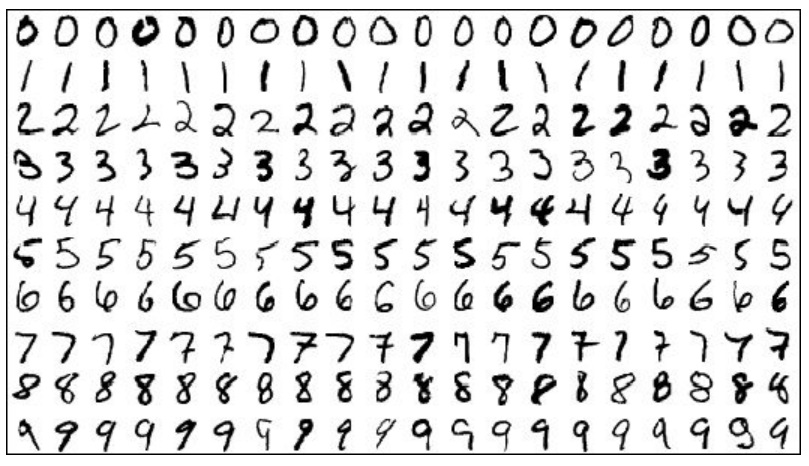课程名称:CS20: Tensorflow for Deep Learning Research
视频地址:https://www.bilibili.com/video/av15898988/index_4.html#page=3
课程资源:http://web.stanford.edu/class/cs20si/index.html
参考资料:https://zhuanlan.zhihu.com/p/28924642
一、线性回归
线性回归是机器学习中非常简单的问题,我们用tensorflow实现一个小例子。假设出生率(
X
)和平均寿命(
1.1 Tensorflow 实现
① 首先我们读取txt文件中的数据:
import utils
DATA_FILE = "D:/MachineLearning/Notes/Tensorflow/Projects/Project1/birth_life_2010.txt"
# data is a numpy array of shape (190, 2), each row is a datapoint
data,n_samples =utils.read_birth_life_data(DATA_FILE)utils.py是github文件中已经有的,utils.read_birth_life_data(filename)是里面定义的读取数据的函数,可以自己看一下。
② 定义输入X和目标Y的占位符(placeholder):
X = tf.placeholder(tf.float32, name='X')
Y = tf.placeholder(tf.float32, name='Y')③ 定义需要更新和学习的参数w和b,并初始化为0
w = tf.get_variable('weight', initializer=tf.constant(0.0))
b = tf.get_variable('bia', initializer=tf.constant(0.0))④ 构建预测模型
Y_predicted = w * X + b⑤ 利用均方误差作为损失函数:
loss = tf.square(Y - Y_predicted, name='loss')⑥ 利用梯度下降最小化损失函数:
optimizer = tf.train.GradientDescentOptimizer(learning_rate=0.001).minimize(loss)⑦ 在session中执行运算:
with tf.Session() as sess:
# Step 7: initialize the necessary variables, in this case, w and b
sess.run(tf.global_variables_initializer())
# Step 8: train the model
for i in range(100):# run 100 epochs
for x, y in data:
# Session runs train_op to minimize loss
sess.run(optimizer,feed_dict={X: x, Y: y})
# Step 9: output the values of w and b
w_out,b_out = sess.run([w,b])在执行100个epoch以后, w=−6.07,b=84.93 。
当然你也可以假设其他的预测模型,例如:
w = tf.get_variable('weights_1', initializer=tf.constant(0.0))
u = tf.get_variable('weights_2', initializer=tf.constant(0.0))
b = tf.get_variable('bias', initializer=tf.constant(0.0))
Y_predicted =w * X * X +X * u + b最终线性回归找到的直线为:

从图中我们可以看到左下方有一些极端值,既有较低的出生率,也有较低的平均寿命,这些点在优化的过程中会让直线向左偏移,造成模型性能下降。这是因为我们选用的损失函数是均方误差,导致这些极端值占的权重过大,一种改善方法是选用Huber loss。
1.2 Huber Loss
Huber Loss 的定义如下:

当误差比较小的时候使用均方误差,误差比较大的时候使用绝对值误差。
在实现huber loss的时候,因为tf是以图的形式来定义,所以不能使用逻辑语句,比如if等,我们可以使用TensorFlow中的条件判断语句,比如tf.where、tf.case等等。

实现Huber Loss 时我们可以选用 tf.cond :
tf.cond(
pred,
true_fn=None,
false_fn=None,
...)定义Huber Loss函数如下:
def huber_loss(labels, predictions, delta=14.0):
residual = tf.abs(labels - predictions)
def f1(): return 0.5 * tf.square(residual)
def f2(): return delta * residual - 0.5 * tf.square(delta)
return tf.cond(residual < delta, f1, f2)在执行180个epoch以后, w=−5.87,b=85.27 。

到底哪一个模型表现更好,我们可以设置测试集进行测试。
1.3 优化函数
上面我们选择了梯度下降的方法优化函数,Tensorflow还有很多优化函数可供选择:
tf.train..Optimizer
tf.train.GradientDescentOptimizer
tf.train.AdadeltaOptimizer
tf.train.AdagradOptimizer
tf.train.AdagradDAOptimizer
tf.train.MomentumOptimizer
tf.train.AdamOptimizer
tf.train.FtrlOptimizer
tf.train.ProximalGradientDescentOptimizer
tf.train.ProximalAdagradOptimizer
tf.train.RMSPropOptimizer二、MNIST逻辑回归
MNIST是手写数字数据集,里面的图像如下图所示:

没一张图是 28×28 像素,你可以将每一张图伸展为 784大小的向量,每一个对应一个标签——0~9中的一个数字。
2.1 Tensorflow实现
TF Learn中内置了一个脚本可以读取MNIST数据集:
from tensorflow.examples.tutorials.mnist import input_data
mnist = input_data.read_data_sets('data/mnist', one_hot=True)接着定义占位符(placeholder)和权重参数
x = tf.placeholder(tf.float32, shape=[None, 784], name='image')
y = tf.placeholder(tf.int32, shape=[None, 10], name='label')
w = tf.get_variable('weight', shape=[784, 10], initializer=tf.truncated_normal_initializer())
b = tf.get_variable('bias', shape=[10], initializer=tf.zeros_initializer())输入数据的shape=[None, 784]表示第一维接受任何长度的输入,第二维等于784是因为28x28=784。权重w使用均值为0,方差为1的正态分布,偏置b初始化为0。
然后定义预测结果、loss和优化函数
logits = tf.matmul(x, w) + b
entropy = tf.nn.softmax_cross_entropy_with_logits(labels=y, logits=logits)
loss = tf.reduce_mean(entropy, axis=0)
optimizer = tf.train.GradientDescentOptimizer(learning_rate=0.01).minimize(loss)使用tf.matmul做矩阵乘法,然后使用分类问题的loss函数交叉熵,最后将一个batch中的loss求均值,对其使用随机梯度下降法。
因为数据集中有测试集,所以可以在测试集上验证其准确率
preds = tf.nn.softmax(logits)
correct_preds = tf.equal(tf.argmax(preds, 1), tf.argmax(y, 1))
accuracy = tf.reduce_sum(tf.cast(correct_preds, tf.float32), axis=0)首先对输出结果进行softmax得到概率分布,然后使用tf.argmax得到预测的label,使用tf.equal得到预测的label和实际的label相同的个数,这是一个长为batch的0-1向量,然后使用tf.reduce_sum得到正确的总数。
最后在session中运算
with tf.Session() as sess:
writer = tf.summary.FileWriter('./logistic_log', sess.graph)
start_time = time.time()
sess.run(tf.global_variables_initializer())
n_batches = int(mnist.train.num_examples / batch_size)
for i in range(n_epochs): # train the model n_epochs times =10
total_loss = 0
for _ in range(n_batches):
X_batch, Y_batch = mnist.train.next_batch(batch_size)
_, loss_batch = sess.run(
[optimizer, loss], feed_dict={x: X_batch,
y: Y_batch})
total_loss += loss_batch
print('Average loss epoch {0}: {1}'.format(i, total_loss / n_batches))
print('Total time: {0} seconds'.format(time.time() - start_time))
print('Optimization Finished!') # should be around 0.35 after 25 epochs
# test the model
n_batches = int(mnist.test.num_examples / batch_size) # batch_size=128
total_correct_preds = 0
for i in range(n_batches):
X_batch, Y_batch = mnist.test.next_batch(batch_size)
accuracy_batch = sess.run(accuracy, feed_dict={x: X_batch, y: Y_batch})
total_correct_preds += accuracy_batch
print('Accuracy {0}'.format(total_correct_preds / mnist.test.num_examples))





















 327
327

 被折叠的 条评论
为什么被折叠?
被折叠的 条评论
为什么被折叠?








